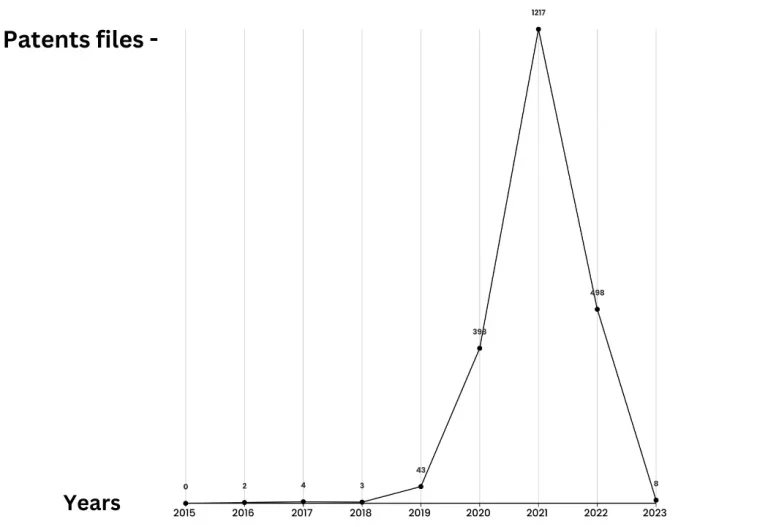The patent landscape of 6G technology, though still in its infancy, indicates a rapidly growing interest and investment in the future of telecommunications.
Unlike previous generations, 6G is anticipated to revolutionize the way we interact with the world around us, by introducing technologies that could support ultra-high-speed data transmission, extremely low latency, and highly reliable communication systems capable of supporting advanced applications such as holographic communication, augmented reality (AR), virtual reality (VR), and the Internet of Everything (IoE).
In the early years, the patent activity surrounding 6G was minimal, reflecting the nascent stage of research and development in this area. However, as technological advancements in 5G began to plateau and the industry started to look towards the next big leap, there was a noticeable shift.
This turning point was marked by a surge in patent filings related to 6G technologies, signaling a concerted effort by governments, research institutions, and major corporations to lay the groundwork for the next generation of wireless communication.
This surge can be attributed to several factors. Firstly, the realization that 6G could offer solutions to the limitations faced by 5G technology, such as even higher data rates, lower latency, and improved connectivity for a broader range of devices and services.
Secondly, the growing competition among nations and companies to establish leadership in the telecommunications sector has fueled a race to secure intellectual property rights that could offer a significant competitive edge in the future.
The areas of focus within 6G patent filings are diverse, reflecting the broad potential applications of 6G technology. These include, but are not limited to, advances in artificial intelligence (AI) integration for network optimization and management, new antenna technologies for enhanced signal transmission and reception, energy efficiency improvements to support sustainable development goals, and security enhancements to protect against increasingly sophisticated cyber threats.
As the landscape continues to evolve, it is expected that the number of patents filed will fluctuate, influenced by breakthroughs in research, shifts in policy and regulation, and changes in market demand.
The current trend towards collaboration and open innovation in the development of 6G technology could also impact the patent landscape, as stakeholders may choose to share intellectual property to accelerate the deployment of 6G networks and their associated services.






